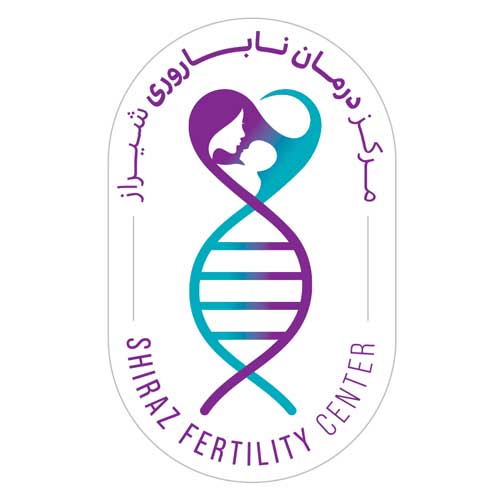
Semen Analysis

Male infertility immunology
Indications for PGD
PGD indications To date, PGD has been used in cases of recurrent miscarriage, multiple failed IVF cycles (more than 2), unexplained infertility, advanced maternal age, male factor infertility, a history of pregnancy or birth of a child with chromosomal abnormalities, a family history of structural chromosomal abnormalities, a family history of X-linked diseases, and inherited genetic disorders.

Currently, PGD is primarily performed for the following:
Couples at high risk of transmitting a hereditary disease to their offspring. This disease can be a single-gene disorder (autosomal recessive, autosomal dominant, or X-linked disorder) or a structural chromosomal abnormality (such as a balanced translocation). Generally, these couples oppose prenatal diagnosis and subsequent selective termination of pregnancy for ethical or religious reasons, or because they have previously experienced multiple miscarriages. Additionally, there are infertile couples who are carriers of a hereditary disease and readily accept PGD in conjunction with their IVF treatment.
Couples undergoing IVF whose embryos are screened for chromosomal aneuploidies (PGS) have an increased chance of pregnancy. PGS is particularly recommended for women of advanced maternal age, those with a history of recurrent miscarriages or implantation failures, and for men with obstructive or non-obstructive azoospermia.
Today, PGD is available for a wide range of single-gene disorders. Common autosomal recessive disorders diagnosed with this method include cystic fibrosis, beta-thalassemia, sickle cell disease, and spinal muscular atrophy type 1. The most common autosomal dominant diseases are myotonic dystrophy, Huntington’s disease, and Charcot-Marie-Tooth disease type A1. For X-linked disorders, most diagnoses are for fragile X syndrome, hemophilia A, and Duchenne muscular dystrophy.
In very rare cases, some centers have reported performing PGD for mitochondrial disorders or for two conditions simultaneously. For chromosomal abnormalities, PGD is primarily used for reciprocal and Robertsonian translocations, with a smaller number of cases involving other abnormalities such as inversions or deletions. Aneuploidy screening is probably the most common reason for PGD and is primarily recommended for couples undergoing IVF due to advanced maternal age, as well as for patients with recurrent IVF failure.
The underlying principle is that since numerical chromosomal abnormalities cause a significant proportion of miscarriages and a large number of embryos are aneuploid, selective transfer of euploid embryos should increase the chances of successful IVF treatment. Various studies have shown that PGS increases implantation rates and reduces miscarriage rates, although more large randomized controlled trials are needed to evaluate the true impact of this technique in different scenarios.
Another group of critical PGD indications involves complex ethical dilemmas. For instance, determining the HLA type of an embryo to use the baby as a cord blood stem cell donor for a sick sibling. Verlinsky and colleagues reported the first case of this kind in 2001. Consequently, HLA typing has become a significant PGD application in five countries, including the United States, Italy, Turkey, Belgium, and Australia.
HLA matching can be combined with the diagnosis of monogenic diseases such as Fanconi anemia or beta-thalassemia, especially when siblings are affected. Alternatively, it can be performed alone for cases like children with leukemia. The primary ethical concern with these applications is the instrumentalization of the child, although some authors argue that ethics are not violated in this case, as the child is not only a donor but also a loved member of the family.
Another challenging aspect of PGD is performing the procedure without revealing the Huntington’s disease status to the patient. This scenario arises when patients do not wish to know their carrier status but still desire healthy offspring. This can place clinicians in a difficult position, such as when no embryos are available for transfer, necessitating a sham transfer to prevent the patient from suspecting that they are carriers and that the absence of embryos is due to all of them being affected by the disease.
The ESHRE Ethics Committee currently recommends the use of exclusion testing. The basis of exclusion testing is the investigation of linkage with polymorphic markers where the origin of the chromosome in the parents and two previous generations is determined. In this way, only embryos that do not carry the chromosome obtained from the affected grandparent are transferred, and therefore, there is no longer a need to identify the mutation. A newer application of PGD is for the diagnosis of late-onset diseases and cancer predisposition syndromes.
It can be argued that PGD is unethical for late-onset diseases as individuals remain healthy until the disease manifests, usually in their fourth decade of life. On the other hand, the high probability or certainty of developing certain disorders, along with their untreatable nature, can lead to a life filled with stress, anticipation of the first symptoms, and the expectation of an early death. While PGD is often considered an early form of prenatal diagnosis, the nature of the request for PGD is often distinct from that of prenatal diagnosis. Some cases widely accepted for PGD, as mentioned earlier, would not be acceptable for prenatal diagnosis.”
Other indications
Preimplantation Genetic Screening (PGS) significantly improves the chances of successful IVF pregnancies in couples who have experienced unexplained repeated IVF failures. It is estimated that more than half of unsuccessful IVF cases cannot be explained by obvious problems with embryo “quality”. However, for many couples, these statistics are quite misleading. Most IVF centers rely on the appearance of the embryo to distinguish between “good” or “high-quality” embryos and those of lower quality.
Traditionally, an embryo was considered ‘good’ if it demonstrated the appropriate number of cell divisions at a specific time in its developmental cycle, had evenly sized cells, and lacked cellular fragments that might indicate developmental abnormalities. However, recent advancements have shown that even embryos that appear ‘normal’ or ‘excellent’ under a microscope and receive the highest scores from embryologists may in fact be abnormal and unable to result in a pregnancy. This has led to the integration of Preimplantation Genetic Diagnosis (PGD) into the embryologist’s toolkit in IVF laboratories.
PGD has revolutionized the way we approach pre-conception health. By allowing physicians and scientists to examine embryos before they develop, we can now use genetic tools to avoid selecting embryos that, while appearing healthy, may carry genetic conditions that could compromise a healthy pregnancy. Some studies have shown that embryos which might be considered suboptimal based on appearance alone could actually be of the highest quality and have ten to twenty times the chance of resulting in a healthy pregnancy compared to those selected without the benefit of advanced PGD techniques.
It is now scientifically proven that the quality of an embryo should be assessed at a deeper level than its mere appearance. This method has also, for the first time, confirmed the doubts of IVF researchers regarding the reliability of visually assessing and grading embryos for patients with unsuccessful IVF attempts. PGD is beneficial for patients with unexplained infertility, recurrent miscarriages, failed IVF treatments, advanced maternal age, or male factor infertility.
In these cases, the most likely cause is a chromosomal abnormality. Chromosomal abnormalities can be numerical (aneuploidy) or structural. Aneuploidy, the most common chromosomal disorder, can occur in both eggs and sperm. Structural abnormalities include translocations, inversions, deletions, and duplications. These structural abnormalities can also occur in eggs and sperm. Transmission of a chromosomal abnormality to the embryo can lead to a decreased chance of implantation, miscarriage, or the birth of a child with a genetic disorder.
recurrent miscarriage
Recurrent miscarriage, defined as three or more consecutive miscarriages in the first trimester, affects approximately 1% of the human population. When evaluating these patients, genetic, anatomical, endocrine, and immunological causes should be initially investigated and ruled out. Many physicians also test for genetic clotting disorders, although the necessity of this test is debated. The medical evaluation of recurrent spontaneous abortion varies from person to person but typically includes a physical examination; pelvic ultrasound; hysterosalpingography or saline hysterosonography to evaluate the uterus; complete blood count; thyroid-stimulating hormone, anti-thyroid antibodies, prolactin, anti-phospholipid antibodies (including anti-cardiolipin and anti-phosphatidylserine); karyotype (chromosomal analysis) of both parents; and possibly endometrial biopsy and screening for genetic clotting disorders.
Approximately 5-8% of couples experiencing recurrent miscarriages have abnormal karyotypes, often involving a balanced translocation. A balanced translocation is a rearrangement of chromosomes in an individual that significantly increases the risk of producing abnormal eggs or sperm, leading to a higher chance of miscarriage and birth defects. PGD can be performed for couples carrying a balanced translocation, allowing them to transfer only chromosomally normal embryos, thus reducing the risk of miscarriage.
Using PGD for translocations is technically more complex than for aneuploidies. Couples carrying translocations should consult with a genetic counselor to explore their options. If they wish to proceed with PGD, they can be referred to a center with experience in performing this test. Fertile couples experiencing recurrent miscarriages should be evaluated for chromosomal abnormalities. One of the partners may be a carrier of a balanced translocation or a mosaic aneuploidy.
Even after comprehensive testing, no specific identifiable cause of miscarriage is found in many couples, leading to a lack of standardized treatment options. Without treatment, couples experiencing recurrent miscarriages have a 55-70% chance of a successful live birth, depending on the number of previous miscarriages and whether they have had a previous normal pregnancy. Therefore, expectant management (without interventional treatment) is a reasonable option for these patients. For couples desiring a more aggressive approach, PGD can be offered to significantly reduce the risk of first-trimester miscarriage (by more than 50%) due to abnormal chromosome numbers.
Multiple failed IVF cycles (more than two)
In vitro fertilization (IVF) often enables infertile couples to achieve successful pregnancies. However, some couples do not conceive even after multiple IVF cycles. Some cases of treatment failure are due to the transfer of embryos with chromosomal abnormalities. PGD is used to identify aneuploidy, minimizing the likelihood of a chromosomal abnormality in future pregnancies and increasing the chances of a successful pregnancy.
Unexplained infertility
The most likely cause of unexplained infertility is a chromosomal abnormality. One of the partners may be a carrier or have a mosaic aneuploidy
Advanced maternal age
Older women (37 years and above) are at a higher risk of conceiving babies with aneuploidy, implantation failure, increased risk of miscarriage, or the birth of a child with a chromosomal disorder (such as Down syndrome). Since a female’s egg production is complete at birth, the chromosomes in her eggs may undergo abnormal divisions over time, resulting in fertilized eggs with an abnormal number of chromosomes.
Additionally, aneuploidy is a major cause of decreased fertility with increasing age. Numerous studies have shown that approximately 70% of embryos in older women may be aneuploid. For women 37 years and older undergoing IVF cycles, performing PGD to detect aneuploidy significantly improves pregnancy rates and reduces miscarriage rates. Furthermore, if a woman has six or more good-quality embryos, the chance of pregnancy with a chromosomal abnormality also decreases.
Male factor infertility
Approximately half of infertility cases are related to sperm disorders. Many sperm disorders originate from chromosomal abnormalities such as aneuploidy or structural chromosomal aberrations. Men carrying a chromosome with a balanced translocation are at risk of producing sperm with structural chromosomal abnormalities. Numerous studies have shown that around 3-8% of sperm from healthy, fertile men are aneuploid, while 27-74% of sperm from severely infertile men are aneuploid. In male factor infertility, chromosomal analysis of the man’s sperm should be considered prior to IVF.
History of pregnancy with fetal chromosomal abnormality
In cases with a history of pregnancy or childbirth resulting in a child with a chromosomal abnormality, or a family history of structural chromosomal abnormalities, PGD can reduce the risk of specific disorders in subsequent pregnancies. This procedure can sometimes be a suitable alternative to CVS or amniocentesis, as it can prevent the termination of an abnormal pregnancy.
Single-gene diseases
Single-gene disorders, also known as monogenic disorders, occur when a defective gene is inherited. These disorders can be categorized into two main groups. The first group consists of recessive disorders, which only manifest when a defective copy of the gene is inherited from both parents. The second group comprises dominant disorders, where inheriting a defective copy from only one parent is sufficient for the disease to appear. Hundreds of different single-gene disorders, caused by defects in hundreds of different genes, have been identified. Most of these disorders are very rare, although some are relatively common. Well-known recessive single-gene disorders include cystic fibrosis, sickle cell anemia, and Tay-Sachs disease, while dominant disorders include myotonic dystrophy and Marfan syndrome.
Source: Clinical Approaches to Infertility in Reproductive Biology
Also read:



